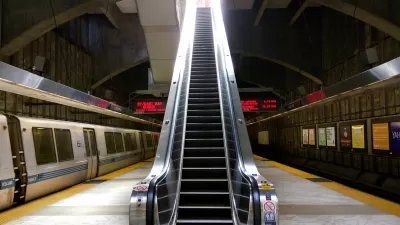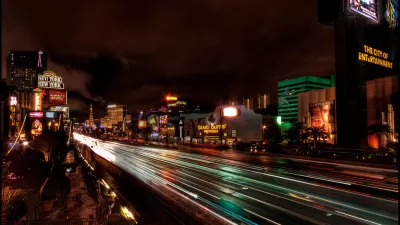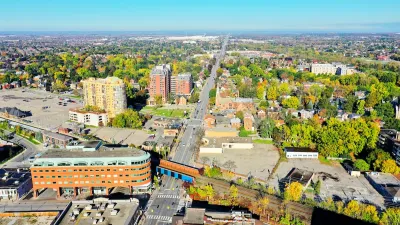The Regional Transportation Commission is looking for ways to reverse ridership figures that have plummeted since the advent of transportation network companies.

"As the use of ride-hailing increases around the Las Vegas Valley, especially along the Strip, bus use in the area continues to fall," reports Mick Akers.
The Regional Transportation Commission used to generate its most revenue in fares from bus routes running along the Las Vegas Strip—not so much anymore. "Bus revenue on the Strip fell 18 percent between October 2015 and December 2018," according to RTC data shared by Akers. According to a source quoted in the article, the RTC used to make $6 million in profit operating buses on what it calls the resort corridor.
Faced with the economic realities of a post ride-hailing world, the RTC is looking to reinvent itself. Included among the plans are a new on-demand micromobility shuttle pilot project.
For more context on transportation planning in Las Vegas, here is a list of previous coverage on the subject from the Planetizen archives.
- New Traffic Management Tech Coming to Downtown Las Vegas (December 2018)
- In Las Vegas, Ridesharing and Transit Complement and Compete (October 2018)
- Brightline, Florida's High-Speed Rail Company, Goes All in on Vegas (September 2018)
- A New Fleet of AVs Operating in Las Vegas (May 2018)
- Elevated Expressway Proposal Goes Bust in Las Vegas(December 2017)
- Las Vegas Light Rail Plans Take a Big Step Forward (March 2017)
- RTC Bike Share Shows Las Vegas' Bike-Friendly Side (October 2016)
- Vanishing Act for Free Parking on the Las Vegas Strip (January 2016)
-
Could the Las Vegas Strip Go Multi-Modal?(August 2014)
FULL STORY: Dwindling Las Vegas Strip bus ridership concerns officials

Alabama: Trump Terminates Settlements for Black Communities Harmed By Raw Sewage
Trump deemed the landmark civil rights agreement “illegal DEI and environmental justice policy.”

Planetizen Federal Action Tracker
A weekly monitor of how Trump’s orders and actions are impacting planners and planning in America.

Why Should We Subsidize Public Transportation?
Many public transit agencies face financial stress due to rising costs, declining fare revenue, and declining subsidies. Transit advocates must provide a strong business case for increasing public transit funding.

Understanding Road Diets
An explainer from Momentum highlights the advantages of reducing vehicle lanes in favor of more bike, transit, and pedestrian infrastructure.

New California Law Regulates Warehouse Pollution
A new law tightens building and emissions regulations for large distribution warehouses to mitigate air pollution and traffic in surrounding communities.

Phoenix Announces Opening Date for Light Rail Extension
The South Central extension will connect South Phoenix to downtown and other major hubs starting on June 7.
Urban Design for Planners 1: Software Tools
This six-course series explores essential urban design concepts using open source software and equips planners with the tools they need to participate fully in the urban design process.
Planning for Universal Design
Learn the tools for implementing Universal Design in planning regulations.
Caltrans
Smith Gee Studio
Institute for Housing and Urban Development Studies (IHS)
City of Grandview
Harvard GSD Executive Education
Toledo-Lucas County Plan Commissions
Salt Lake City
NYU Wagner Graduate School of Public Service





























